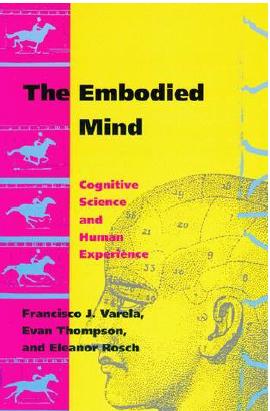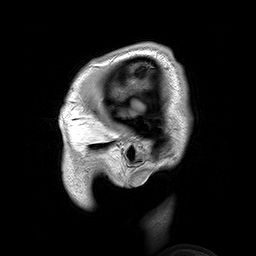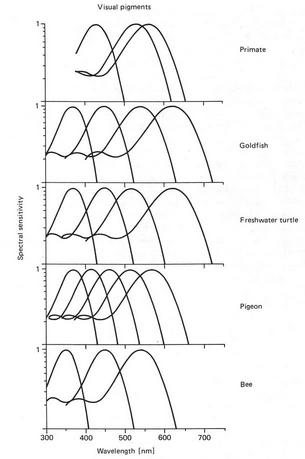It is very,very gratifying to see interest in neurophenomenology increasing. Welcome! Exciting things are happening. If you feel like you could make a contribution to the field, do it! We are still in the early phase, though probably at the “end of the beginning”. In 1996 you could find about three references online (in mid 2013, Google shows 35,400 results). Around then I got a copy of neurophenomenologist/cognitive scientist Francisco Varela, philosopher Evan Thompson, and cognitive psychologist Eleanor Rosch’s The Embodied Mind: Cognitive Science and Human Experience. To this day I am struck by the lucidity of the writing, the patient willingness to explore the virtues of opposing viewpoints, and especially the depth of the challenge to mainstream cognitive neuroscience and psychology. The basic idea is that the science of cognition and the brain needs to somehow reckon with human experience, in all it’s phenomenological, fleshy, ecologically situated complexity. The science of human cognition requires an account of how life seems to us, how it feels, what it means. Not doing so amounts to a shortcut, though an understandable one, given the difficulties routinely encountered. The authors painstakingly present the case for why failing to include the role of the evolutionarily developed phenomenological body and the meaningful, experiential, existential dimensions will hamper scientific accounts of cognition and the brain. Varela, Thompson and Rosch present a radical challenge to the idea that the mind is best modeled based on data and measurements only from the outside, or purely objectively. Cognitive neuroscience describes cognition and consciousness as machinery emerging from the hardware of the brain, and Varela, Thompson and Rosch carefully explore the benefits of this view, but opt for a radical alternative. I am convinced it is the foundational and definitive work in neurophenomenology. Interestingly, Daniel Dennett, a staunch defender of cognitivist orthodoxy, had substantive criticism but went on to say: “the authors find many new ways of putting together old points that we knew were true but didn’t know what to do with, and that in itself is a major contribution to our understanding of cognitive science.” The term “neurophenomenology” does not appear in this book. As I have mentioned elsewhere, the term emerges around 1990 from the work of Charles Laughlin (though there seems to be one mention in a hard-to-find publication from 1988). I had considered directly contacting Varela around 1996 to convince him of the helpfulness of the term “neurophenomenology”, and I must admit to an utter dopamine blast of pleasure when around that time I found his 1996 paper “Neurophenomenology : A Methodological Remedy for the Hard Problem“. Kismet! It was an exciting time, and helped push me towards doing a PhD on one narrow aspect of clinical neurophenomenology: modeling how accurate patients are at reporting on their cardiac rhythm states, and how the brain both enables knowledge and mistaken beliefs about heartbeats . With new people showing an interest in and perhaps coming into this field, we might as well make sure to examine the core text: The Embodied Mind. There is a copy online and here is an excerpt, but I highly recommend getting a physical copy. Here is a section entitled The Retreat into Natural Selection, from Chapter 8: Enaction: Embodied Cognition (for what it’s worth, in my last class as a PhD student, I had my colleagues in David Buss‘ Evolutionary Psychology seminar read and discuss this chapter, and they hated it!) .  “In preparation for the next chapter, we now wish to take note of a prevalent view within cognitive science, one which constitutes a challenge to the view of cognition that we have presented so far. Consider, then, the following response to our discussion: “I am willing to grant that you have shown that cognition is not simply a matter of representation but depends on our embodied capacities for action. I am also willing to grant that both our perception and categorization of, say, color, are inseparable from our perceptually guided activity and that they are enacted by our history of structural coupling. Nevertheless, this history is not the result of just any pattern of coupling; it is largely the result of biological evolution and its mechanism of natural selection. Therefore our perception and cognition have survival value, and so they must provide us with some more or less optimal fit to the world. Thus, to use color once more as an example, it is this optimal fit between us and the world that explains why we see the colors we do.” We do not mean to attribute this view to any particular theory within cognitive science. On the contrary, this view can be found virtually anywhere within the field: in vision research, it is common both to the computational theory of Marr and Poggio and to the “direct theory” of J. J. Gibson and his followers. It is prevalent in virtually every aspect of the philosophical project of “naturalized epistemology.” It is even voiced by those who insist on an embodied and experientialist approach to cognition. For this reason, this view can be said to constitute the “received view” within cognitive science of the evolutionary basis for cognition. We cannot ignore, then, this retreat into natural selection. Let us begin, once again, with our now familiar case study of color. The cooperative neuronal operations underlying our perception of color have resulted from the long biological evolution of the primate group. As we have seen, these operations partly determine the basic color categories that are common to all humans. The prevalence of these categories might lead us to suppose that they are optimal in some evolutionary sense, even though they do not reflect some pregiven world. This conclusion, however, would be considerably unwarranted. We can safely conclude that since our biological lineage has continued, our color categories are viable or effective. Other species, however, have evolved different perceived worlds of color on the basis of different cooperative neuronal operations. Indeed, it is fair to say that the neuronal processes underlying human color perception are rather peculiar to the primate group. Most vertebrates (fishes, amphibians, and birds) have quite different and intricate color vision mechanisms. Insects have evolved radically different constitutions associated with their compound eyes. One of the most interesting ways to pursue this comparative investigation is through a comparison of the dimensionalities of color vision. Our color vision is trichromatic: as we have seen, our visual system comprises three types of photoreceptors cross-connected to three color channels. Therefore, three dimensions are needed to represent our color vision, that is, the kinds of color distinctions that we can make. Trichromacy is certainly not unique to humans; indeed, it would appear that virtually every animal class contains some species with trichromatic vision. More interesting, however, is that some animals are dichromats, others are tetrachromats, and some may even be pentachromats. (Dichromats include squirrels, rabbits, tree shrews, some fishes, possibly cats, and some New World monkeys; tetrachromats include fishes that live close to the surface of the water like goldfish, and diurnal birds like the pigeon and the duck; diurnal birds may even be pentachromats). Whereas two dimensions are needed to represent dichromatic vision, four are needed for tetrachromatic vision (see figure 8.6), and five for pentachromatic vision. Particularly interesting are tetrachromatic (perhaps pentachromatic) birds, for their underlying neuronal operations appear to differ dramatically from ours.
“In preparation for the next chapter, we now wish to take note of a prevalent view within cognitive science, one which constitutes a challenge to the view of cognition that we have presented so far. Consider, then, the following response to our discussion: “I am willing to grant that you have shown that cognition is not simply a matter of representation but depends on our embodied capacities for action. I am also willing to grant that both our perception and categorization of, say, color, are inseparable from our perceptually guided activity and that they are enacted by our history of structural coupling. Nevertheless, this history is not the result of just any pattern of coupling; it is largely the result of biological evolution and its mechanism of natural selection. Therefore our perception and cognition have survival value, and so they must provide us with some more or less optimal fit to the world. Thus, to use color once more as an example, it is this optimal fit between us and the world that explains why we see the colors we do.” We do not mean to attribute this view to any particular theory within cognitive science. On the contrary, this view can be found virtually anywhere within the field: in vision research, it is common both to the computational theory of Marr and Poggio and to the “direct theory” of J. J. Gibson and his followers. It is prevalent in virtually every aspect of the philosophical project of “naturalized epistemology.” It is even voiced by those who insist on an embodied and experientialist approach to cognition. For this reason, this view can be said to constitute the “received view” within cognitive science of the evolutionary basis for cognition. We cannot ignore, then, this retreat into natural selection. Let us begin, once again, with our now familiar case study of color. The cooperative neuronal operations underlying our perception of color have resulted from the long biological evolution of the primate group. As we have seen, these operations partly determine the basic color categories that are common to all humans. The prevalence of these categories might lead us to suppose that they are optimal in some evolutionary sense, even though they do not reflect some pregiven world. This conclusion, however, would be considerably unwarranted. We can safely conclude that since our biological lineage has continued, our color categories are viable or effective. Other species, however, have evolved different perceived worlds of color on the basis of different cooperative neuronal operations. Indeed, it is fair to say that the neuronal processes underlying human color perception are rather peculiar to the primate group. Most vertebrates (fishes, amphibians, and birds) have quite different and intricate color vision mechanisms. Insects have evolved radically different constitutions associated with their compound eyes. One of the most interesting ways to pursue this comparative investigation is through a comparison of the dimensionalities of color vision. Our color vision is trichromatic: as we have seen, our visual system comprises three types of photoreceptors cross-connected to three color channels. Therefore, three dimensions are needed to represent our color vision, that is, the kinds of color distinctions that we can make. Trichromacy is certainly not unique to humans; indeed, it would appear that virtually every animal class contains some species with trichromatic vision. More interesting, however, is that some animals are dichromats, others are tetrachromats, and some may even be pentachromats. (Dichromats include squirrels, rabbits, tree shrews, some fishes, possibly cats, and some New World monkeys; tetrachromats include fishes that live close to the surface of the water like goldfish, and diurnal birds like the pigeon and the duck; diurnal birds may even be pentachromats). Whereas two dimensions are needed to represent dichromatic vision, four are needed for tetrachromatic vision (see figure 8.6), and five for pentachromatic vision. Particularly interesting are tetrachromatic (perhaps pentachromatic) birds, for their underlying neuronal operations appear to differ dramatically from ours.
Figure 8.6 Tetrachromatic vs. trichomatic mechanisms are illustrated here on the basis of the different retinal pigments present in various animals. From Neumeyer, Das Farbensehen des Goldfisches. When people hear of this evidence for tetrachromacy, they respond by asking, ”What are the other colors that these animals see?” This question is understandable but naive if it is taken to suggest that tetrachromats are simply better at seeing the colors we see. It must be remembered, though, that a four-dimensional color space is fundamentally different from a three-dimensional one: strictly speaking, the two color spaces are incommensurable, for there is no way to map the kinds of distinctions available in four dimensions into the kinds of distinctions available in three dimensions without remainder. We can, of course, obtain some analogical insights into what such higher dimensional color spaces might be like. We could imagine, for example, that our color space contains an additional temporal dimension. In this analogy, colors would flicker to different degrees in proportion to the fourth dimension. Thus to use the term pink, for example, as a designator in such a four-dimensional color space would be insufficient to pick out a single color: one would have to say rapid-pink, etc. If it turns out that the color space of diurnal birds is pentachromatic (which is indeed possible), then we are simply at a loss to envision what their color experience could be like. It should now be apparent, then, that the vastly different histories of structural coupling for birds, fishes, insects, and primates have enacted or brought forth different perceived worlds of color. Therefore, our perceived world of color should not be considered to be the optimal “solution” to some evolutionarily posed “problem.” Our perceived world of color is, rather, a result of one possible and viable phylogenic pathway among many others realized in the evolutionary history of living beings. Again, the response on the behalf of the “received view” of evolution in cognitive science will be, “Very well, let us grant that color as an attribute of our perceived world cannot be explained simply by invoking some optimal fit, since there is such a rich diversity of perceived worlds of color. Thus the diverse neuronal mechanisms underlying color perception are not different solutions to the same evolutionarily posed problem. But all that follows is that our analysis must be made more precise. These various perceived worlds of color reflect various forms of adaptation to diverse ecological niches. Each animal group optimally exploits different regularities of the world. It is still a matter of optimal fit with the world; it is just that each animal group has its own optimal fit.” This response is a still more refined form of the evolutionary argument. Although optimizations are considered to differ according to the species in question, the view remains that perceptual and cognitive tasks involve some form of optimal adaptation to the world. This view represents a sophisticated neorealism, which has the notion of optimization as its central explanatory tool. We cannot proceed further, then, without examining more closely this idea in the context of evolutionary explanations. We cannot attempt to summarize the state of the art of evolutionary biology today, but we do need to explore some of its classical foundations and their modern alternatives.




